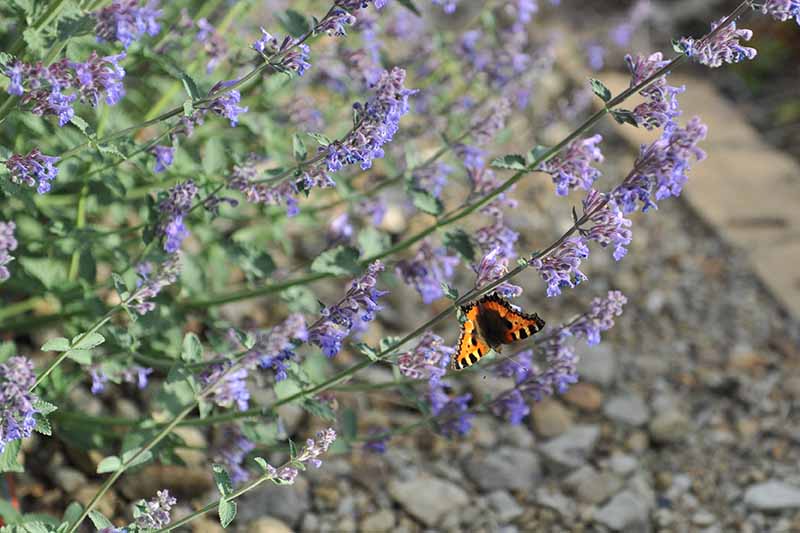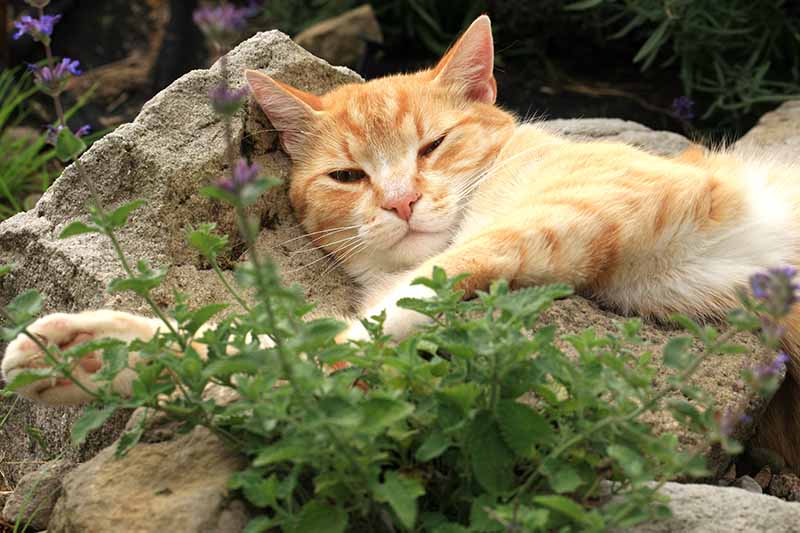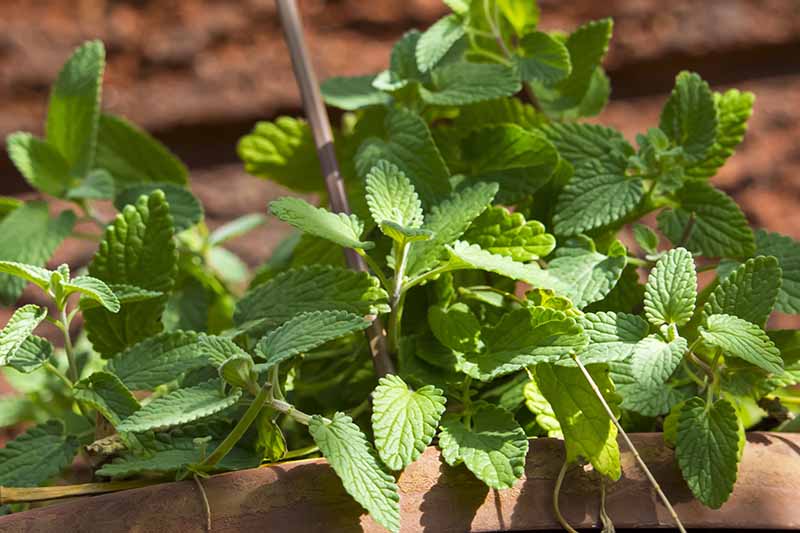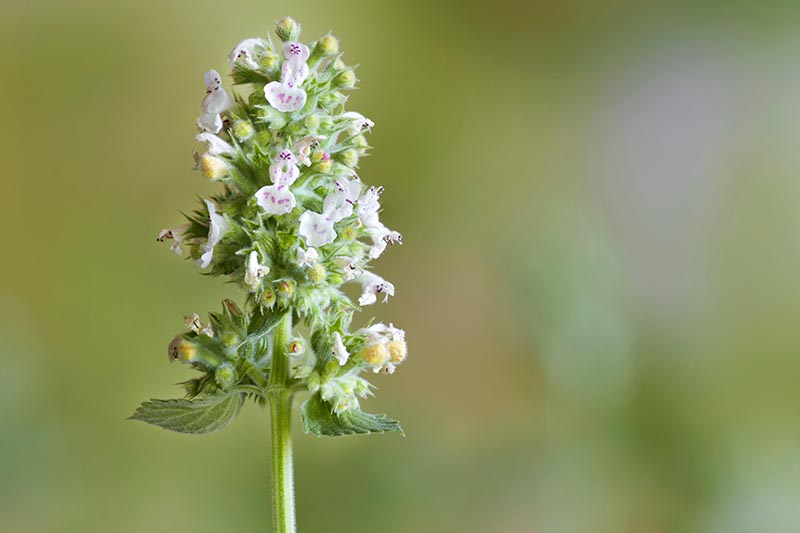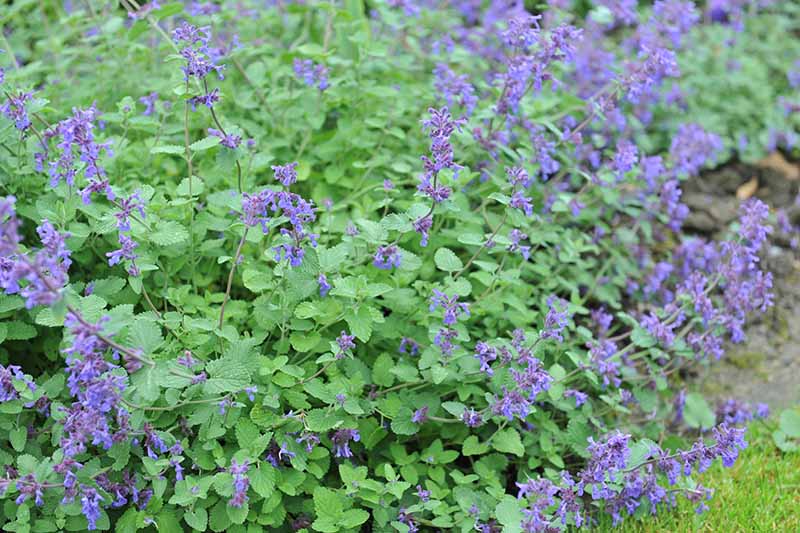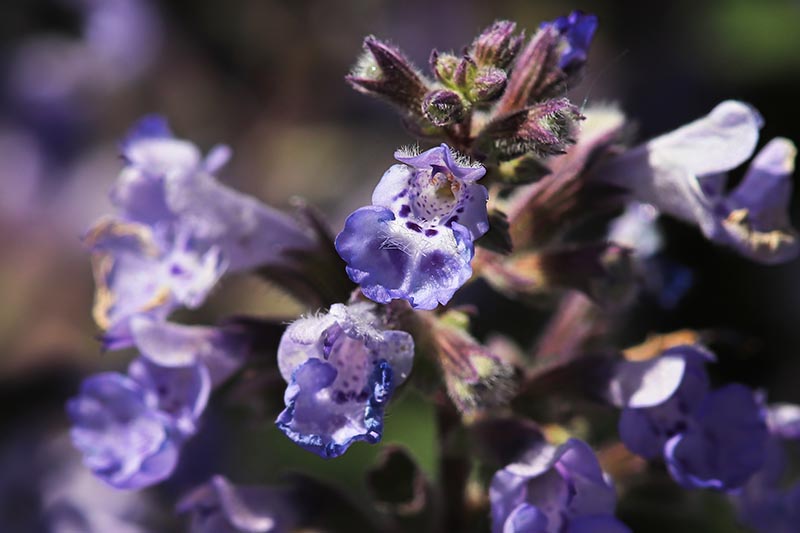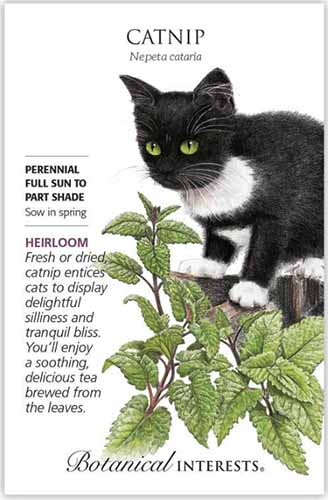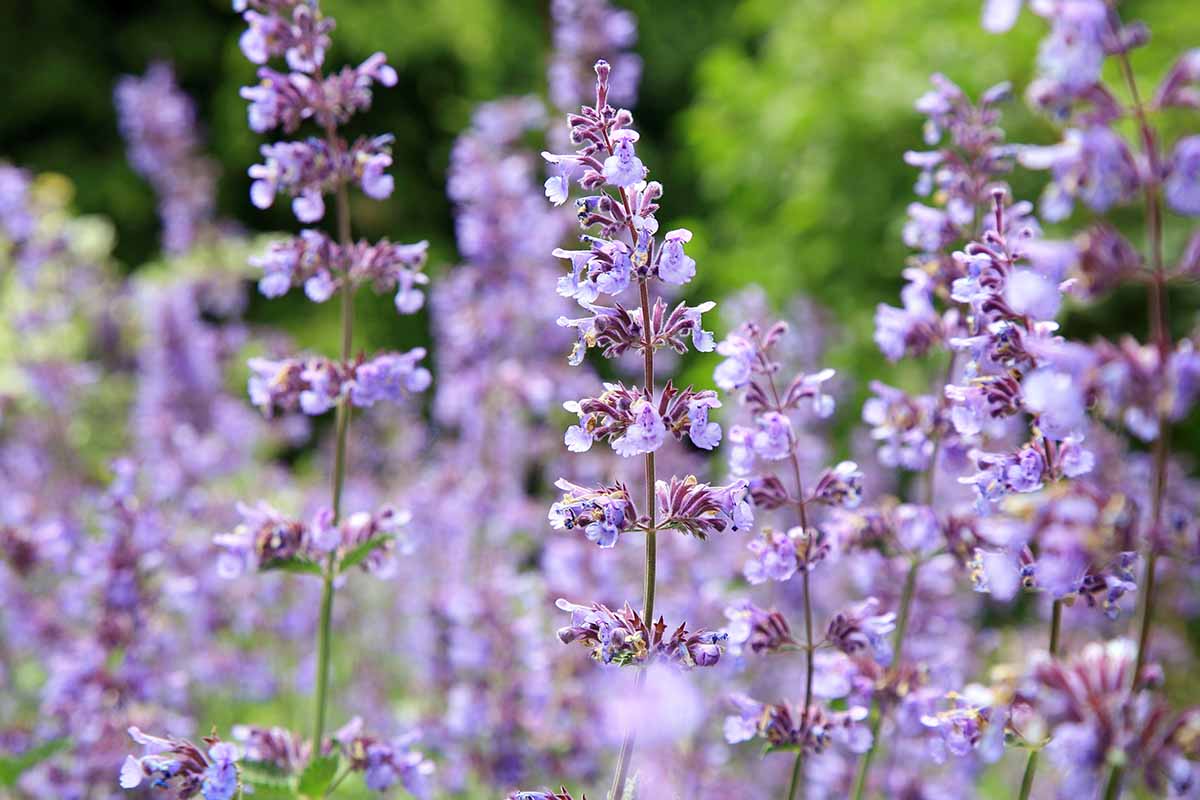Catnip (Nepeta cataria) is a long-used medicinal herb that drives kitties wild, while other species, including N. mussinii (syn. N. racemosa), N. nervosa, N. grandiflora, and N. x faassenii are attractive landscaping plants. They have many similarities, and their common names are even used interchangeably sometimes, which may be why they are so often confused. But N. cataria is a distinct species with notable differences. We link to vendors to help you find relevant products. If you buy from one of our links, we may earn a commission. Continue reading to learn how to tell them apart. Both attract pollinators and other types of beneficial insects, making them useful companion plants, and both are well suited for containers or borders. So what sets them apart? N. cataria, commonly called catnip, is a plant that’s famous for attracting cats. It contains a chemical compound called nepetalactone that causes that characteristic euphoria in our feline friends. Other Nepeta species also contain nepetalactone, but in much lower concentrations. It is also commonly used in herbal medicine, and can be made into a soothing tea for alleviating symptoms of indigestion and other ailments. To identify catnip, look for toothed gray-green heart-shaped leaves, and small white or light pink flowers that grow on spikes. The square stems are also covered in short hairs. Rather weedy in appearance, it grows in untidy clumps a few feet tall and wide, and has a tendency to spread. You can learn all about growing catnip in our guide. On the other hand, If you are looking for something attractive and neat to fill a flower bed, N. mussinii (syn. N. racemosa) is a better bet. This is the species you’ll typically see listed generically as “catmint.” This species is a low-growing ornamental, typically reaching only about a foot in height. It also has gray-green foliage, but with a tidy growth habit, and it features clusters of vibrant lilac-colored flowers that bloom continuously throughout the summer. It is perfect for a border, to create a colorful edge along a path, or as a ground cover in a flower bed. Caucasus or giant catmint, N. grandiflora, has an upright growth habit with a mature height of two to three feet, with a spread of up to two feet. This species features violet-blue or pink blossoms, depending on the cultivar, and gray-green, slightly fuzzy foliage. N. nervosa is easy to distinguish from catnip thanks to its green leaves and mounding growth habit. It has a mature height of one to one and a half feet and a similar spread, and lavender blue flowers. N. x faassenii, or Faassen’s catmint, is an award-winning N. mussinii hybrid with a compact mounding growth habit and small but showy flowers that is grown primarily as an ornamental. As this hybrid is sterile, it won’t spread and take over your garden. Your cats may enjoy munching on catmints, but they won’t typically go haywire the way they do for catnip. If you want to grow catnip for your feline companion, you’ll need to opt for N. cataria. N. cataria You can purchase organic or conventional N. cataria seeds from Botanical Interests. For the ornamental varieties which contain less nepetalactone, select from one of the following species and cultivars: N. mussinii Eden Brothers has N. mussinii seeds available for purchase in packets and packages ranging up to a quarter-pound in size. N. nervosa ‘Blue Moon’ is a striking cultivar with lavender flowers. Seeds are available from True Leaf Market. N. nervosa ‘Blue Moon’ Another N. nervosa cultivar, ‘Pink Cat’ features bright pink flowers for a colorful addition to your herb garden or perennial border. N. nervosa ‘Pink Cat’ You can find ‘Pink Cat’ seeds available from True Leaf Market. If you would prefer to grow sterile N. x faassenii, a notable cultivar is ‘Walker’s Low.’ It produces a profusion of bright blue flowers on upright silvery-green stems. Contrary to what it’s name suggests, this cultivar grows to a mature height and width of one to two feet. N. x faassenii ‘Walker’s Low’ You can find plants in #1 containers available from Nature Hills Nursery. Still uncertain about which plant to choose? Check our guide to growing plants in the Nepeta genus for more information.
Nip or Mint? Both Are the Cat’s Pajamas
While it may seem confusing at first glance, there are clear clues that will help you to tell these plants apart. Catnip is the best choice for medicinal use (or cats!) while catmints are superior for ornamental plantings. And even if you get mixed up, you can’t really go wrong. Both are wonderful herbs for the home garden! Are you growing catnip for your feline friends? Or enjoying ornamental catmints in your garden borders? Let us know in the comments section below! Want to learn more about mint family plants? Check out these articles next:
How to Grow Mint in the Garden (Without It Taking Over)How to Grow and Care for Spearmint PlantsHow to Grow and Use Chocolate Mint

